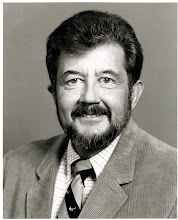An interesting aspect of the sulfur dioxide suggestion is that the world's coal-fired power plants were doing just that, releasing sulfur dioxide into the atmosphere. This also created acid rain by the conversion of some of the sulfur dioxide into sulfuric acid aerosols through photochemistry. In the 1980s the U.S. created a program called NAPAP or the National Acid Precipitation Assessment Program which eventually led to creating a "cap and trade" system to decrease total sulfur dioxide emanations (Though cap and trade is a controversial system for lowering carbon dioxide limits in the atmosphere, it has been in effect for sulfur dioxide emissions for about 25 years. The costs have been found to be less than predicted and "cap and trade" for sulfur dioxide emissions is no longer controversial.). Since these aerosols also had a cooling effect on the lower atmosphere, taking them out of the atmosphere led to some warming and exacerbated global warming to some extent.
Some aspects of geo-engineering of the atmosphere have been going on for many years, for example, cloud seeding with silver iodide to cause rainfall in a desired place. There were two problems with this. One was that it was difficult to do properly so as to result in rainfall, and the other was that it robbed water from clouds to get rain in one place where naturally it would have rained somewhere else, i.e robbing Peter to pay Paul.
Though he did not use the term geo-engineering, Mikhail Budyco, a famous Soviet climatologist, proposed that a series of large volcanic eruptions might put enough dust and aerosols into the atmosphere to cool the Earth's atmosphere sufficiently to create a runaway glaciation, i.e. a terminal glaciation that would cover the globe, and we needed to begin to experiment with ways of heating or cooling the atmosphere.* Though this prediction seems far fetched, Budyko was a serious scientist and is credited with converting climatology from a qualitative into a quantitative science with his book Heat Balance Of The Earth's Surface in 1956. He was also one of the first to propose "nuclear winter" resulting from an atomic war.
* Budyko, Mikhail I.,(1982) "The Earth's Climate: Past and future," Internat. Geophysics Series, Academic Press, NY, 307 pp.
Budyko, Mikhail I. (1969) "The effect of solar radiation variations on the climate of the Earth," Tellus vol. 21, pp. 611–619.

No comments:
Post a Comment